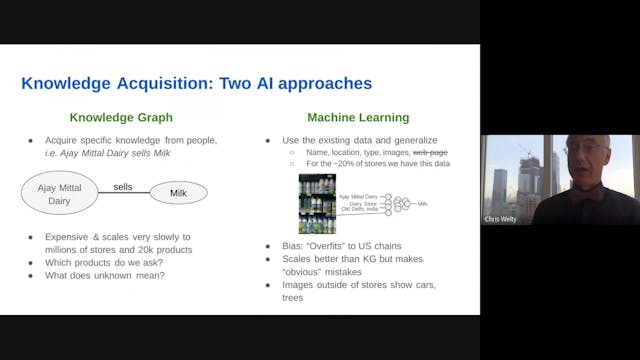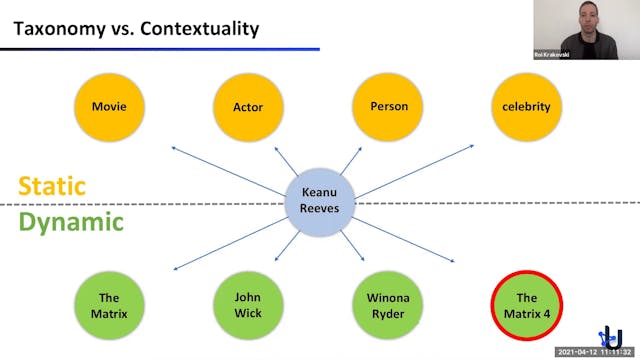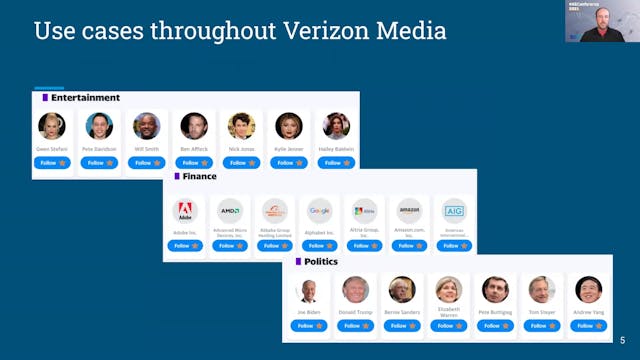Dan McCreary | Graph Hardware Is Coming!
KGC21 | Conference Only Pass
•
19m
In this presentation we will show how current general-purpose CPU hardware fails to deliver high performance graph analytics. We show that by doing a detailed analysis of the actual hardware functionally needed by graph queries (pointer jumping), we can redesign hardware that is optimized for fast graph traversal. We will also show how by combining graph and machine learning that an entire new generation of “sparse matrix” processing will move large enterprise graphs to an entire new level of capabilities. We combine an innovative use of graphics, metaphors and storytelling to help even non-technical staff understand and remember these concepts.
After this session participants will:
Understand the limitations of today’s current hardware for graph analytics
Understand the hardware and software needs of large graph analytics workloads
Understand how hardware can be redesigned for faster performance and lower power consumption
Notes for the program committee
This will not be a sales pitch for any current or future products. This will focus on understanding the concepts required for cost-effective sustainable enterprise-scale knowledge graphs.
Bios:
Dan McCreary is a Distinguished Engineer working for the Optum Advanced Technology Collaborative (ATC). He has a background in AI, Graph, and NoSQL technologies. In the past, Dan has helped build data strategies for the ATC and other business units of Optum and UHG. He is the co-author of the books “Making Sense of NoSQL” (Manning Publications) and "The State of Healthcare Technologies" (O'Reilly). His personal mission is to help organizations create objective ways to matching business problems with emerging technologies. In the past, Dan worked for Steve Jobs at NeXT Computer and Bell Labs as an integrated circuit designer. In 2018 Dan lead the Optum graph technologies project within the ATC which has resulted in the creation of the world’s largest healthcare graph. Dan continues to lead research on AI, knowledge representation, graph machine learning and graph hardware.
Nikhil M. Deshpande is the Director of AI / HPC Product Development in Data Platforms Group at Intel. He leads several advanced technology incubations and development in High Performance Compute, AI and Security. Nikhil has been invited speaker and panelist at numerous conferences and has 15+ US and international patents He holds M.S. and Ph.D. in Electrical and Computer Engineering from Portland State University. He also has M.S. in Technology Management from Oregon Graduate Institute.
#knowledgegraphs #knowledgegraphconference #knowledgegraphsoftware #knowledgegraphintheoryandpractice
Up Next in KGC21 | Conference Only Pass
-
Chris Welty | Shopping Sense: Bringin...
Knowledge Graphs (KGs) continue to penetrate the industrial world after Google's famous "things not strings" was used to explain their acquisition of FreeBase ten years ago. While many KGs exist, they are by and large little more than "entity catalogs", missing entirely the links between those e...
-
Roi Krakovski | The Usearch Contextua...
We exploit the recent breakthroughs in Neuroscience to build web search engines based entirely on AI-generated data, thus eliminating the need to collect users’ data. We show how to generate search queries that are almost identical to real users’ queries. We use the generated queries to build a ...
-
Mike Welch | Serving A Web Scale Kno...
The Yahoo Knowledge Graph powers entity data for user experiences across multiple products at Verizon Media, from search to media to ads. Nodes in the knowledge graph correspond to real world entities: people, places, movies, sports teams, and so on. The edges represent semantic relationships bet...



